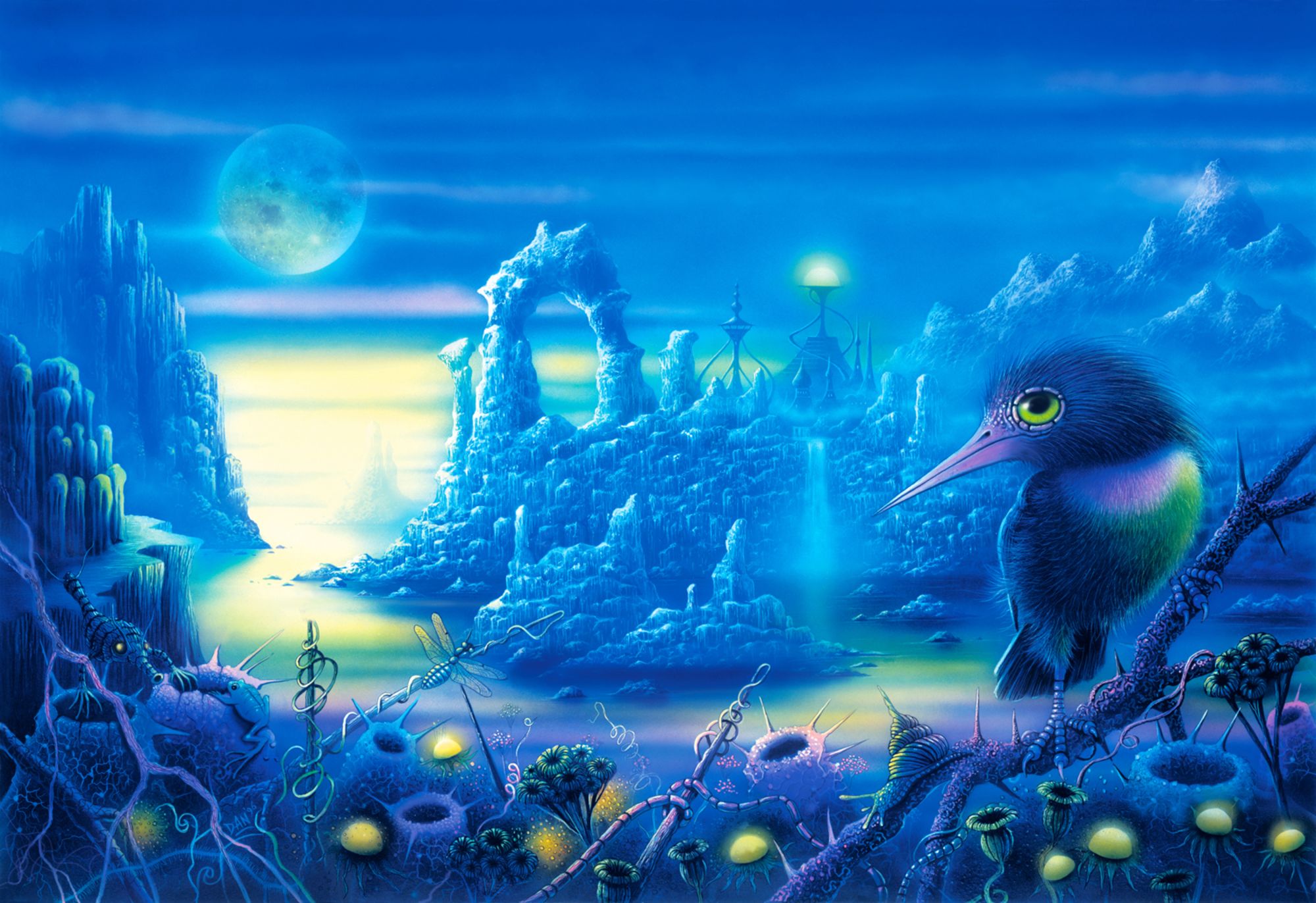Editor’s Note: Watch CNN Inspirations: Out of This World on Friday October 7, 19.15 GMT; Saturday October 8, 20.15 GMT; Sunday October 9, 14:15 GMT.
Story highlights
Artists bring us visions of landscapes beyond Earth -- including the ones we haven't discovered yet
Artist Mark Garlick: I would love to stand on the Moon and look back at the Earth
David A. Hardy: My aim has always been to show people things that they cannot see any other way
“It’s a small world but I wouldn’t want to have to paint it,” American comic Steven Wright often quipped. Some though have turned that on its head to bring us visions of landscapes beyond Earth – including the ones we haven’t even discovered yet.
What do geysers on Europa look like? Or the far distant exoplanets that are now being found? And what about the wonderful worlds that science fiction writers dream up?
Three artists whose job it is to imagine the unseen have given CNN a glimpse of how they are inspired.
Mark Garlick
Mark Garlick, an astronomer who carried out research on binary stars, has written and illustrated books on the solar system and beyond. But he sometimes takes ideas from here on Earth.
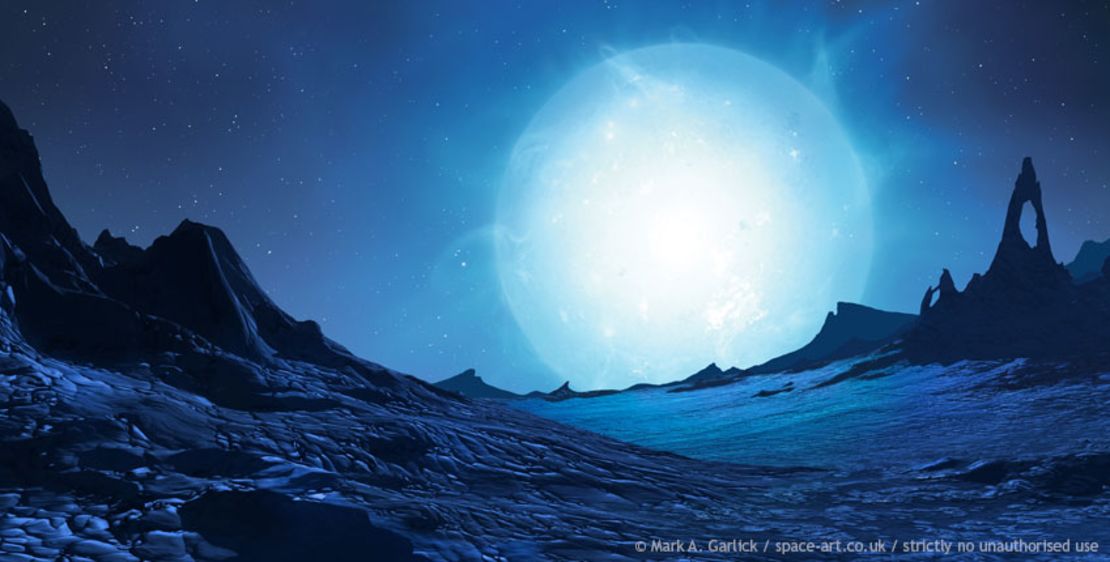
Mars, he says, has landscapes reminiscent of the Grand Canyon, Yellowstone, Hawaii, and Iceland, and has been on field trips to the crater in Arizona to give him an insight into the look of other planets. As a result, he says: “It’s not that difficult to imagine what it would be like standing on the surface of another world.”
Garlick was first inspired to draw as a child. “When I was a kid I was really good at art. I particularly liked dinosaurs. I used to draw them all the time,” he said. He moved from acrylic paints to making digital images in the late 1990s, enjoying the photo-realistic pictures he could create on the computer.
The Juno mission is just starting to return images from Jupiter – and it’s a scene that Garlick illustrated in advance of its encounter.
The art of imagining life beyond Earth
His next mission? “I would love to stand on the Moon and look back at the Earth – it’s four times bigger and 50 times brighter than the Moon appears to us. That would be just amazing,” he said.
David A. Hardy
David A. Hardy, who illustrated his first space book in 1954 at the age of 18 for the late astronomer Patrick Moore, was also drawing from an early age. He was fascinated by natural phenomena like volcanoes and eclipses but also loved the children’s cartoon strip series Rupert Bear.
“I loved the wizard and dragons, the sea serpent, the lift [elevator] to China … I used to try to copy the pictures,” he said.
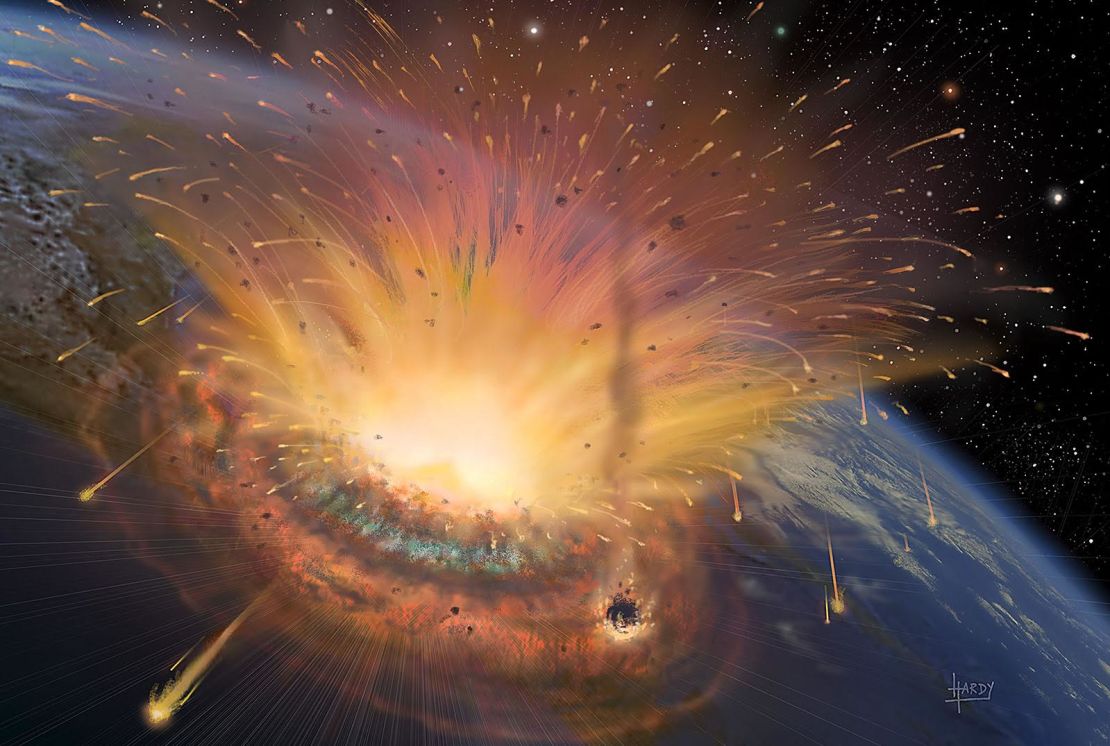
Hardy remembers school friends laughing at him when he said people would go to the Moon. Now scientists are trying to figure out how we might travel to the stars – and it is something Hardy has tried to portray.
“Science and art had always gone hand-in-hand for me. You have to keep up with the science, the discoveries.
“My aim has always been to show people things that they cannot see any other way – to show what it’s really like.”
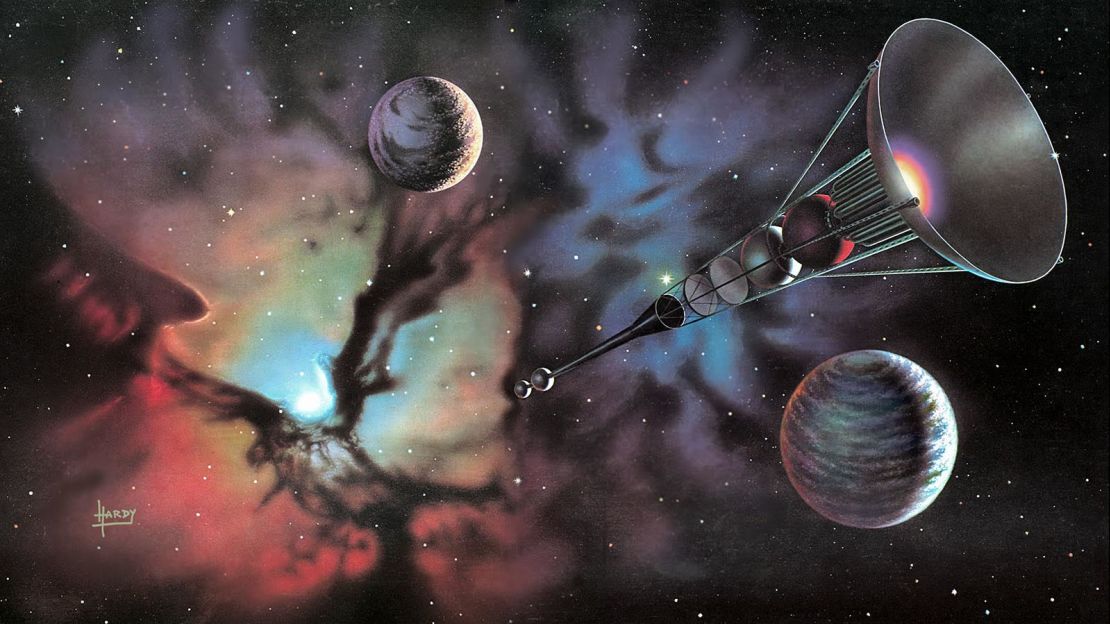
He began his artistic career in a design studio for a chocolate company painting chocolate boxes and catalogs but quickly moved to space. He laments the end of the Apollo missions to the Moon.
“There should have been a progression… staying on the Moon and building bases,” he said.
Hardy was really pleased with how his concept of Pluto turned out as the pictures that were sent back by the New Horizon mission closely matched his work. “It just happened to have been the way I thought it would,” Hardy told CNN.
Danny Flynn
Danny Flynn is another artist who tries to imagine other worlds – primarily for science fiction books – but he too takes his inspiration from nature here on Earth.
“I was drawing from two or three years old. I was always fascinated by nature books. I would get bird books, butterfly books and memorize all the names. I was just constantly drawing,” he said.
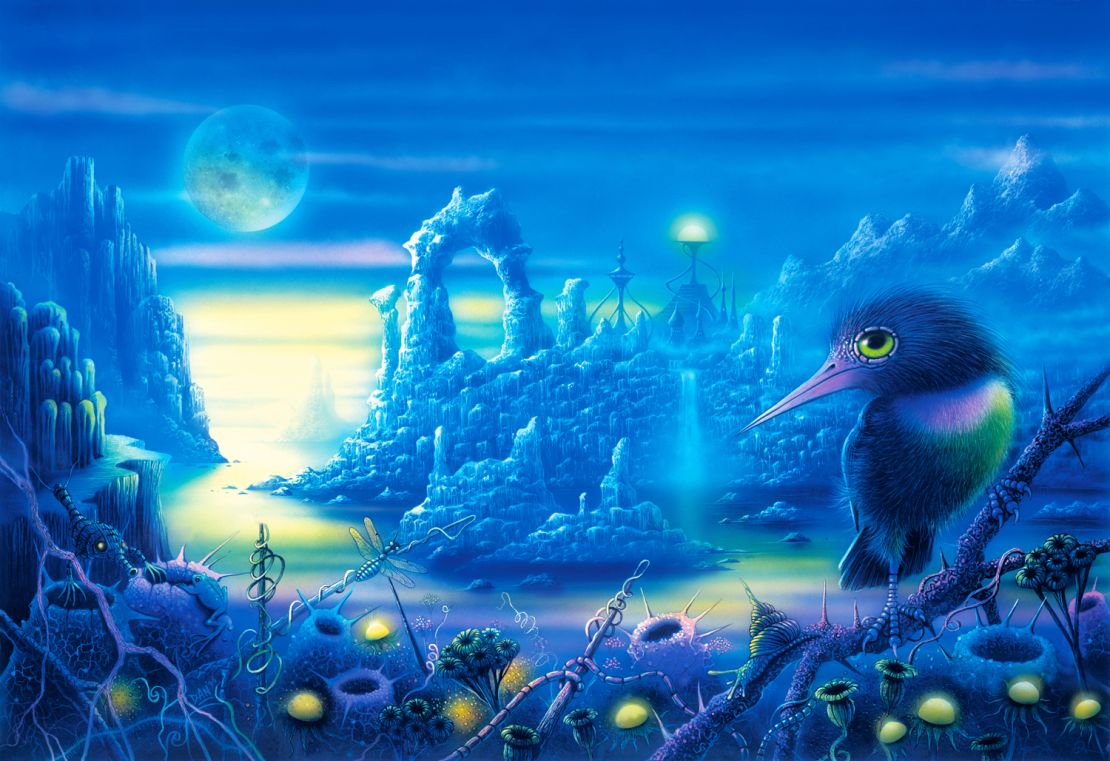
“Once you start reading sci-fi and devouring the literature… you start to see in your head alien landscapes, particularly the creatures that might live there, you can visualize the words of the author – almost like watching a movie
“All I have to do is close my eyes and it’s there. I can see these worlds in my head. Through years of practice … I find it very easy to imagine what these worlds might look like, even down to the color schemes, I can almost smell the places. I can even imagine the music that goes with it.
“It would be a real bonus if some of our paintings ended up looking like places we are yet to discover. That’s a nice thought. People would think we had a vision into the future somehow.”
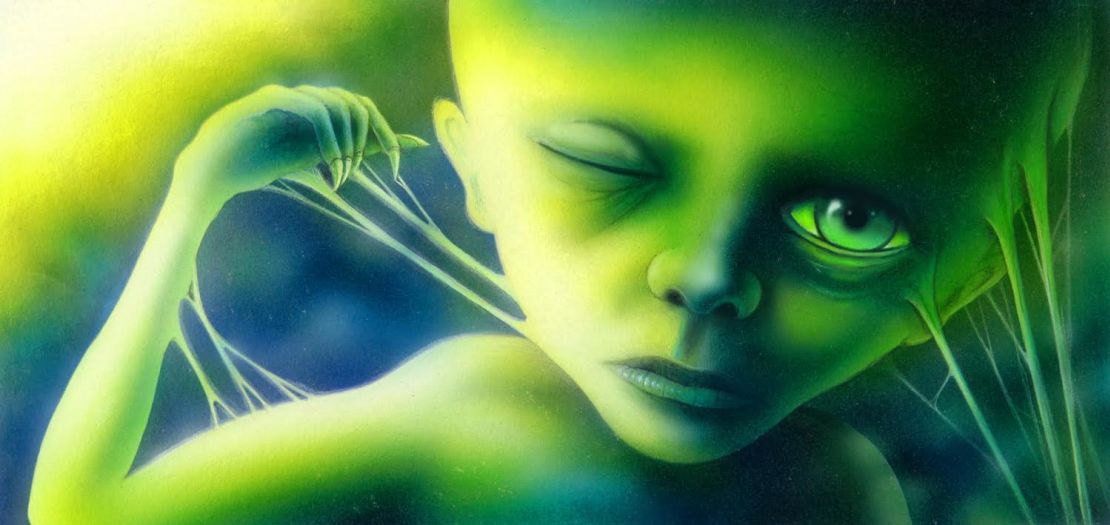
Flynn was also inspired by the Apollo missions which triggered his current project to create a series of characters and short stories for children.
“I had this idea that there might be a world inside the Moon. I loved the idea of worlds within worlds.”
Flynn has painted book covers for science fiction writer Arthur C. Clarke and got to know the author.
“He was very interested in Mars. It was a big passion of his. He really dearly hoped there was something there… total proof of life in the universe or even our own solar system.”
Perhaps the reality will be stranger than fiction.
More art from out of this world can be see on the astronomical artists’ website.
